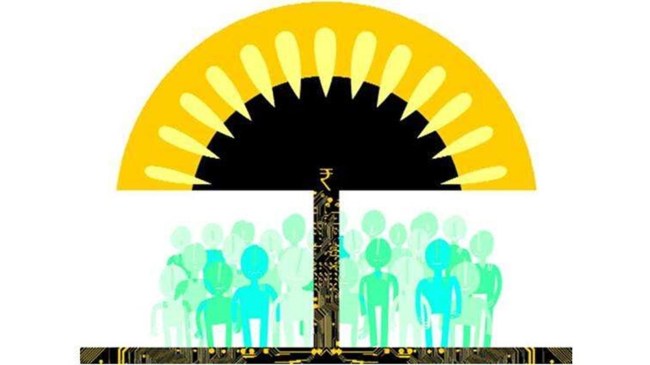Opinion Why India needs a unified welfare state
Consolidating various schemes of the Centre, states will yield long-term dividends
 As a caution, any move towards a unified social security governance model must be federated, flexible, and incentive-driven, with the autonomy to factor in unique social realities.
As a caution, any move towards a unified social security governance model must be federated, flexible, and incentive-driven, with the autonomy to factor in unique social realities. Election-bound Bihar recently announced a generous pension hike from Rs 400 to Rs 1,100 for its elderly, widowed, and disabled citizens. Come election season, such announcements are not just expected but eagerly anticipated. The trend of populist welfare is global, and India is no exception. Though these political philanthropies provide short-term income support, they also raise a fundamental question: Should India remain trapped in fragmented, populist welfare politics, or is it time to build a unified, rights-based, and economically sustainable social security system that fuels the economy? Can the “Digital India” ecosystem be leveraged to deliver smart social security governance that empowers and uplifts? The answer is important for the future of over half of India’s population, who are under the age of 28 and aspire to live a developed-nation dream and the elderly who will need support by 2047.
The International Labour Organisation’s Director-General recently lauded India’s “cash and non-cash” social protection schemes. The ongoing ILO-Phase II survey for India reveals that its schemes reach over 100 crore beneficiaries. This milestone is the cumulative result of numerous schemes launched by both the central and state governments. According to one estimate, there are over 34 major social protection schemes, 24 pension schemes and several independent welfare initiatives by states.
The ILO’s World Social Protection Report (2021) initially estimated India’s coverage at 24.4 per cent, only later adjusting it to 48.8 per cent after the government highlighted the extent of state-level programmes. If even the ILO gets messed up with data, imagine what citizens face when looking for their scattered entitlements.
The pressing challenge is optimising scattered schemes. This includes eliminating duplications, identifying the right beneficiaries, and investing in capacity building and market-ready skill sets for our working population to grow the pie, rather than compete over its pieces. A related challenge is the need to reimagine direct transfers not as isolated, consumptive payouts, but as self-multiplying instruments, where one entitlement has the potential to unlock access to others. For example, could pension benefits be extended to include education allowances for grandchildren of the elderly?
The G20 New Delhi Declaration calls for “sustainably financed universal social protection coverage”. “One Nation, One Social Security governance” presents a promising path forward. It can address current inefficiencies to make the best of the scarce fiscal resources, while sparing citizens the pain of running between various units of the government. For instance, E-Shram registrations are meant for unorganised workers, and EPFO registrations largely cover formal employment. They compete with each other and create problematic boundaries when there is an overlap. Specified eligibility conditions and lack of interoperability often deny simple benefits envisaged by the legislators. A closer look at many state government schemes shows they often repackage existing benefits under new names, offering little differentiated value.
In its report, ‘Successful Social Protection Floor Experiences’ (2011), the ILO found several examples to illustrate how an integrated national strategy and framework were useful to provide universal social assistance and develop basic capabilities of citizens. Brazil’s ‘The Fome Zero’ programme brought in a Unified System of Social Assistance (SUAS) that regulates and organises the social assistance service network in all 26 states, the federal district and 5,564 municipalities. South Korea faced similar challenges in the 1990s and responded by consolidating welfare programmes under institutions like the National Pension Service and the National Health Insurance Service. A similar transition in India is needed.
A “one government” approach moves away from silos, shifting the focus to collective outcomes. It is time to put the Digital India Stack, Aspirational Districts Programme to best use and build on the experiences from programmes like PM-Gati Shakti.
Central legislation like the Employees’ Provident Funds & Miscellaneous Provisions Act, Employees’ Compensation Act, ESIC Act, BOCW, and Maternity Benefit Act provides security to working segments across federal boundaries. Our Constitution empowers states to frame similar schemes in their own spheres. The EPFO currently maintains around 30 crore accounts, with some 8 crore actively contributing. The Cabinet, on July 1, approved the rollout of the Employment Linked Incentive Scheme to enhance job creation, employability and social security, targeting about 3.5 crore jobs in two years. It has chosen EPFO as the vehicle, trusting its capacity at scale. Last financial year, EPFO settled more than 5 crore claims. ESIC is another pillar that delivers at scale. These institutions can be strengthened to transition to a “one government” welfare system, where states are partners in adding value as a top-up rather than reinventing the wheel.
Our collective resolve to be “Viksit Bharat” by 2047 depends upon several factors. One of them is financial security in old age. Cash transfers planned by any unit of the government can be routed through the UAN of the EPFO. A certain percentage of such “transfers” can be used for Provident Fund, pension and insurance.
As a caution, any move towards a unified social security governance model must be federated, flexible, and incentive-driven, with the autonomy to factor in unique social realities. Through bold political consensus, this transition can become one of India’s most transformative governance reforms since Independence.
Prakash is Regional PF Commissioner (Cochin), and Tiwari is Regional Labour Commissioner (Thiruvananthapuram). Views are personal






